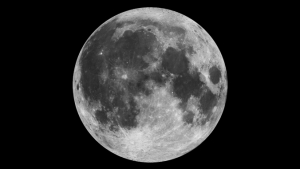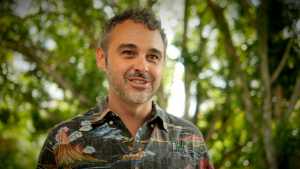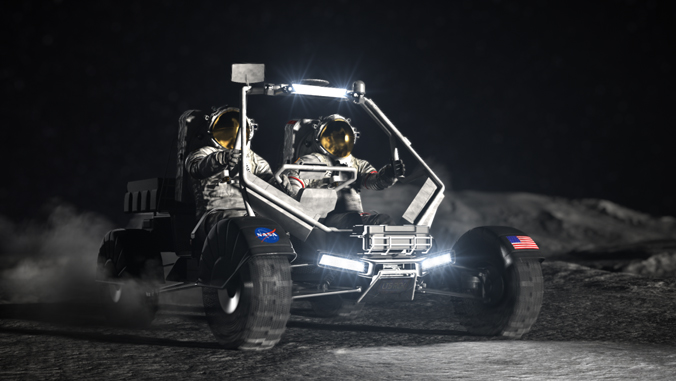NASA has selected University of Hawaiʻi at Mānoa scientists to lead one of three teams developing instruments for Moon travel through the Artemis campaign. Two instruments, including UH’s, will be integrated onto a Lunar Terrain Vehicle (LTV), which astronauts will drive on the Moon. Another instrument will orbit the Moon.

“I’m so excited to see this project come into reality,” said Matthew Siegler, associate researcher in the Hawaiʻi Institute of Geophysics and Planetology (HIGP) at the UH Mānoa School of Ocean and Earth Science and Technology, who will lead the team developing the Lunar Microwave Active-Passive Spectrometer (L-MAPS). “UH has become a major player in the search for ice on the Moon. This instrument selection takes us to the next level.”
The L-MAPS instrument will help determine what is below the Moon’s surface, the heat production of the Moon and search for possible locations of buried ice. The UH science and spacecraft engineering team will work in partnership with instruments developed at NASA’s Jet Propulsion Laboratory (JPL) and the German Technical University at Dresden.
Siegler and deputy principal investigator Shannon Brown, a researcher at JPL, and their team have been designing and testing the L-MAPS instrument for more than five years, preparing for an opportunity to get to the Moon. Being selected for the LTV instrument team moves the development to the next stage—the build—which will primarily take place at JPL.
Outfitting the first crew-driven vehicle on the Moon in 50 years

The LTV vehicle is part of NASA’s efforts to explore the lunar surface as part of the Artemis campaign and is the first crew-driven vehicle to operate on the Moon in more than 50 years. Designed to hold up to two astronauts, as well as operate remotely without a crew, this surface vehicle will enable NASA to achieve more of its science and exploration goals over a wide swath of lunar terrain.
In the NASA announcement, Nicky Fox, associate administrator, Science Mission Directorate at NASA Headquarters in Washington, D.C., emphasized that the Artemis Lunar Terrain Vehicle will advance humanity across the lunar frontier toward exploration and discovery and added that the instruments planned for the LTV combine the best of human and robotic exploration.
When combined, data from the L-MAPS and other instruments will paint a picture of the components of the lunar surface and subsurface to support human exploration and will uncover clues to the history of rocky worlds in our solar system.
“I feel incredibly lucky to be working on lunar research in a time when NASA has prioritized the Artemis return of humans to the Moon,” said Siegler. “Work like this is possible because of researchers at the University of Hawaiʻi working for years leading in planetary science and developing spaceflight technologies. It is exciting to be in the right place and time to ride this wave.”
Collaboration is key to success
At JPL, the L-MAPS instrument will be built with components from Deutsches Zentrum für Luft- und Raumfahrt and Ohio State University. Final testing will be done partially at UH Mānoa. The instrument production and operation on the Moon will be managed by HIGP faculty Miguel Nunes and Trevor Sorensen and will include many roles for UH faculty, undergraduate and graduate students.
—By Marcie Grabowski
